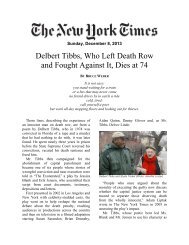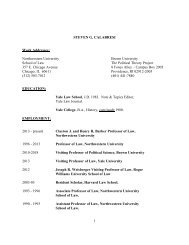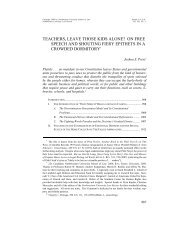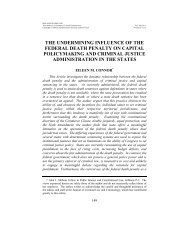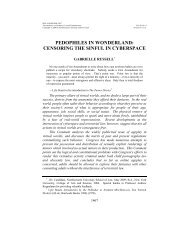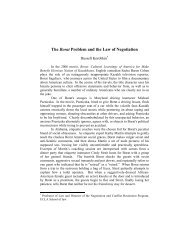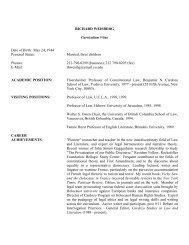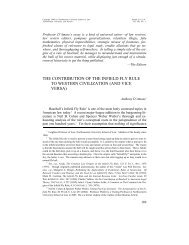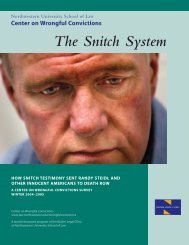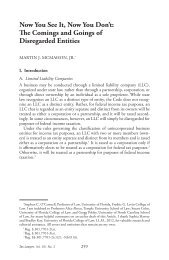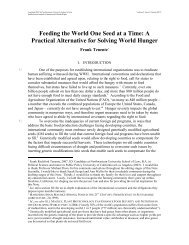The Reverse Triangular Merger Loophole and Enforcing Anti
The Reverse Triangular Merger Loophole and Enforcing Anti
The Reverse Triangular Merger Loophole and Enforcing Anti
You also want an ePaper? Increase the reach of your titles
YUMPU automatically turns print PDFs into web optimized ePapers that Google loves.
1042<br />
N O R T H W E S T E R N U N I V E R S I T Y L A W R E V I E W<br />
structuring M&A transactions. Part II analyzes judicially developed limitations<br />
<strong>and</strong> reactions to reverse merger transactions. This Part also provides a<br />
technical analysis of the leading reverse triangular merger case, SQL Solutions<br />
v. Oracle. 25 That case may prove to be a seminal one, shaping the future<br />
interpretation of reverse triangular mergers. In SQL Solutions, the<br />
parties to a reverse triangular merger failed to obtain written consent from<br />
the nonmerging party <strong>and</strong> transferred a licensing agreement to the nonmerging<br />
party’s competitor upon merger. 26 <strong>The</strong> District Court found that the<br />
merger resulted in nonpermissible transfer of the licensing agreement despite<br />
the fact that the surviving entity was the original owner of the license.<br />
27 Part III argues for the application of anti-assignment clauses <strong>and</strong><br />
thus for requiring consent when assigning contractual rights in reverse triangular<br />
mergers. This Comment concludes by suggesting due diligence<br />
processes by which the current system could be made more congruent with<br />
generally accepted tenets of contract law <strong>and</strong> the economic realities attending<br />
corporate M&A transactions.<br />
I. BACKGROUND<br />
<strong>The</strong> assignment of contractual rights in the context of M&A transactions<br />
ranks as one of the most complex areas of contemporary corporate<br />
law. <strong>The</strong> necessity of assigning contracts from a target company to an acquiring<br />
entity is a critical factor in every M&A deal because it impacts timing,<br />
costs, <strong>and</strong> the parties’ ability to consummate a successful transaction. 28<br />
Since 1971, reverse triangular mergers have been a hotly contested area of<br />
regulation29 <strong>and</strong> were recently touted as the best M&A structure for avoiding<br />
third-party contractual assignment limitations. 30 Section A discusses the<br />
role of anti-assignment clauses <strong>and</strong> legal complications that result from violating<br />
their provisions. Section B explains the mechanics of triangular<br />
mergers based on whether the transaction takes the form of a forward or reverse<br />
triangular merger. <strong>The</strong> section also analyzes the sometimes asymmetric<br />
treatment of anti-assignment clauses by triangular mergers <strong>and</strong> suggests<br />
that reverse triangular mergers are not the ideal solution to anti-assignment<br />
clause problems.<br />
25<br />
C-91-1079 MHP, 1991 U.S. Dist. LEXIS 21097, at *2–5 (N.D. Cal. Dec. 18, 1991).<br />
26<br />
Id.<br />
27<br />
Id. at *12, *15.<br />
28<br />
See Graubart, supra note 24, at 27–43.<br />
29 Id.<br />
30 See supra note 16 <strong>and</strong> accompanying text.



